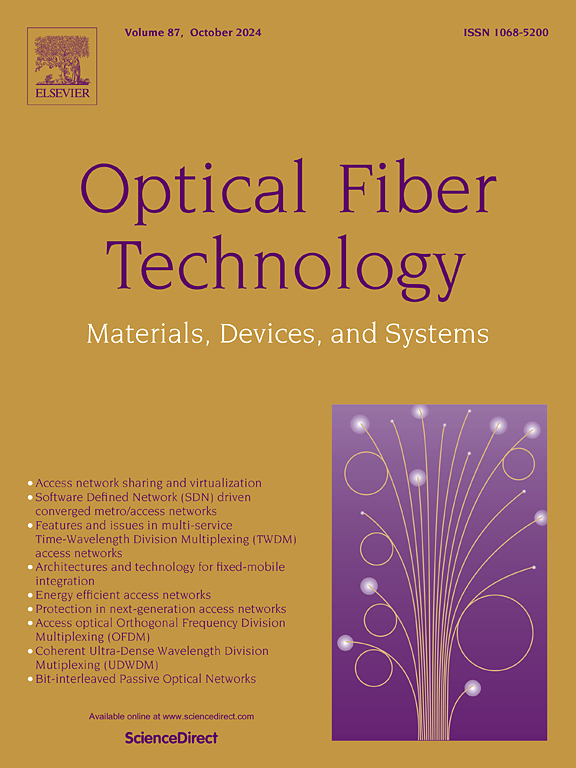Optical fiber axial residual stress distribution measurement based on phase compensation using circular polariscope
IF 2.6
3区 计算机科学
Q2 ENGINEERING, ELECTRICAL & ELECTRONIC
引用次数: 0
Abstract
We present a method to measure axial residual stress distribution in optical fibers based on phase compensation using circular polariscope. The intensity distribution characteristics of fiber polarization information in circular polariscope is analyzed by the Jones matrix. The least square polynomial is used to fit the minimum intensity and obtain the corresponding compensated phase. The phase retardation distribution is derived from the compensated phase. For circularly symmetric structured fiber, a layered model algorithm is constructed to obtain the one-dimensional axial residual stress distribution. For non-circularly symmetric structured fiber, the two-dimensional stress distribution is reconstructed by the filtered back projection algorithm based on computed tomography. To evaluate the proposed method, the residual stress distribution of single-mode optical fiber is measured and compared with the result from the commercial instrument IFA-100. The correlation coefficient exceeds 0.99 and the estimated residual stress noise is ±0.3 MPa. The axial residual stress distribution at the cut-off region of multimode fiber and the cross-sectional distribution of polarization-maintaining fiber are measured. The relation between the structural characteristics of axial residual stress and the refractive index distribution is also analyzed. Measurement of residual stress distribution can provide useful insights for optimizing fabrication processes and enhancing fiber performance.
基于相位补偿的圆偏光镜光纤轴向残余应力分布测量
提出了一种基于相位补偿的圆偏光镜测量光纤轴向残余应力分布的方法。利用琼斯矩阵分析了圆偏振镜中光纤偏振信息的强度分布特性。采用最小二乘多项式拟合最小强度,得到相应的补偿相位。相位延迟分布由补偿相位导出。对于圆对称结构纤维,构造了一种分层模型算法来获得一维轴向残余应力分布。对于非圆对称结构纤维,采用基于计算机断层扫描的滤波反投影算法重构其二维应力分布。为了评估所提出的方法,测量了单模光纤的残余应力分布,并与商用仪器IFA-100的结果进行了比较。相关系数大于0.99,估计残余应力噪声为±0.3 MPa。测量了多模光纤截止区域的轴向残余应力分布和保偏光纤的截面分布。分析了轴向残余应力的结构特性与折射率分布的关系。测量残余应力分布可以为优化制造工艺和提高纤维性能提供有用的见解。
本文章由计算机程序翻译,如有差异,请以英文原文为准。
求助全文
约1分钟内获得全文
求助全文
来源期刊

Optical Fiber Technology
工程技术-电信学
CiteScore
4.80
自引率
11.10%
发文量
327
审稿时长
63 days
期刊介绍:
Innovations in optical fiber technology are revolutionizing world communications. Newly developed fiber amplifiers allow for direct transmission of high-speed signals over transcontinental distances without the need for electronic regeneration. Optical fibers find new applications in data processing. The impact of fiber materials, devices, and systems on communications in the coming decades will create an abundance of primary literature and the need for up-to-date reviews.
Optical Fiber Technology: Materials, Devices, and Systems is a new cutting-edge journal designed to fill a need in this rapidly evolving field for speedy publication of regular length papers. Both theoretical and experimental papers on fiber materials, devices, and system performance evaluation and measurements are eligible, with emphasis on practical applications.
 求助内容:
求助内容: 应助结果提醒方式:
应助结果提醒方式:


